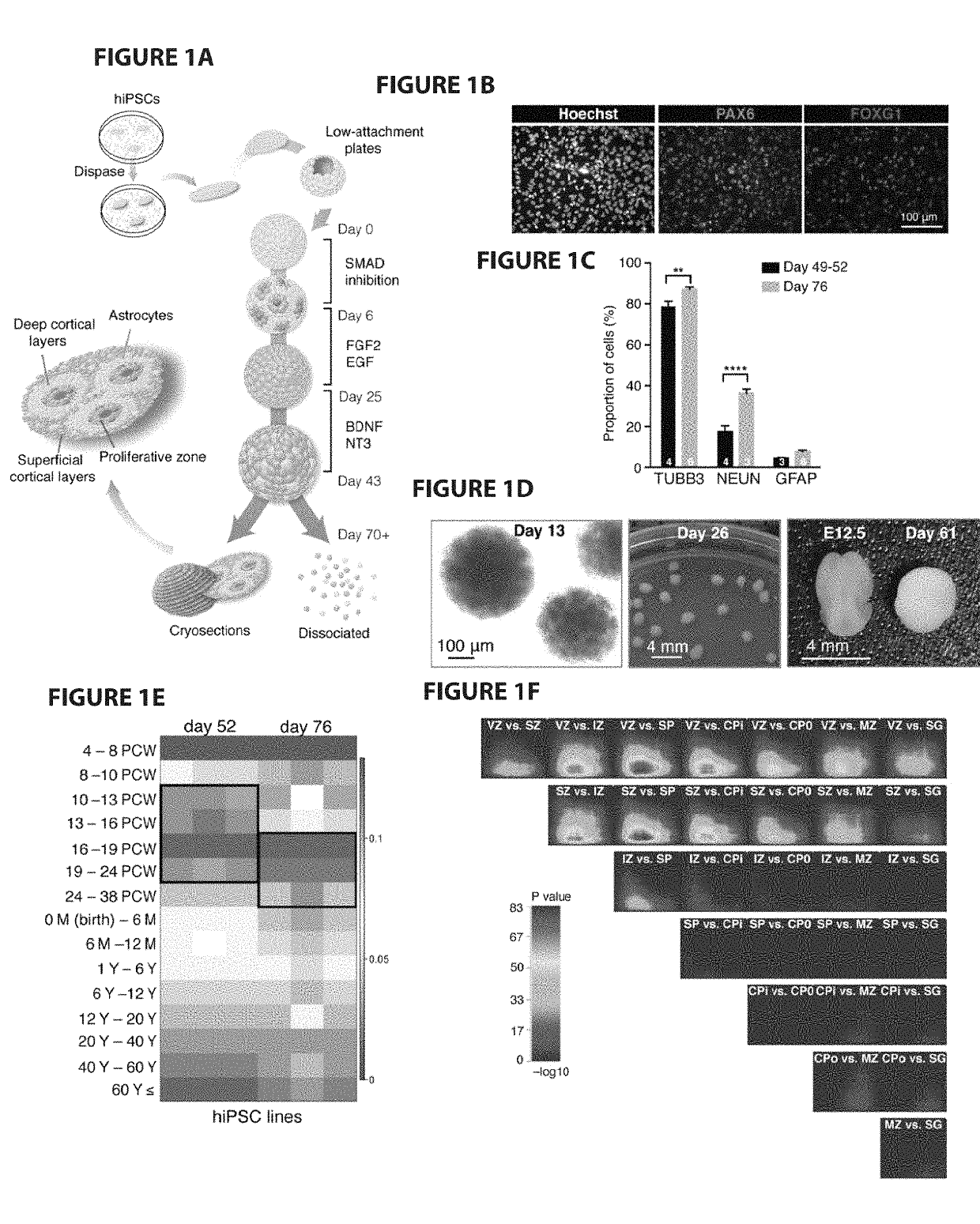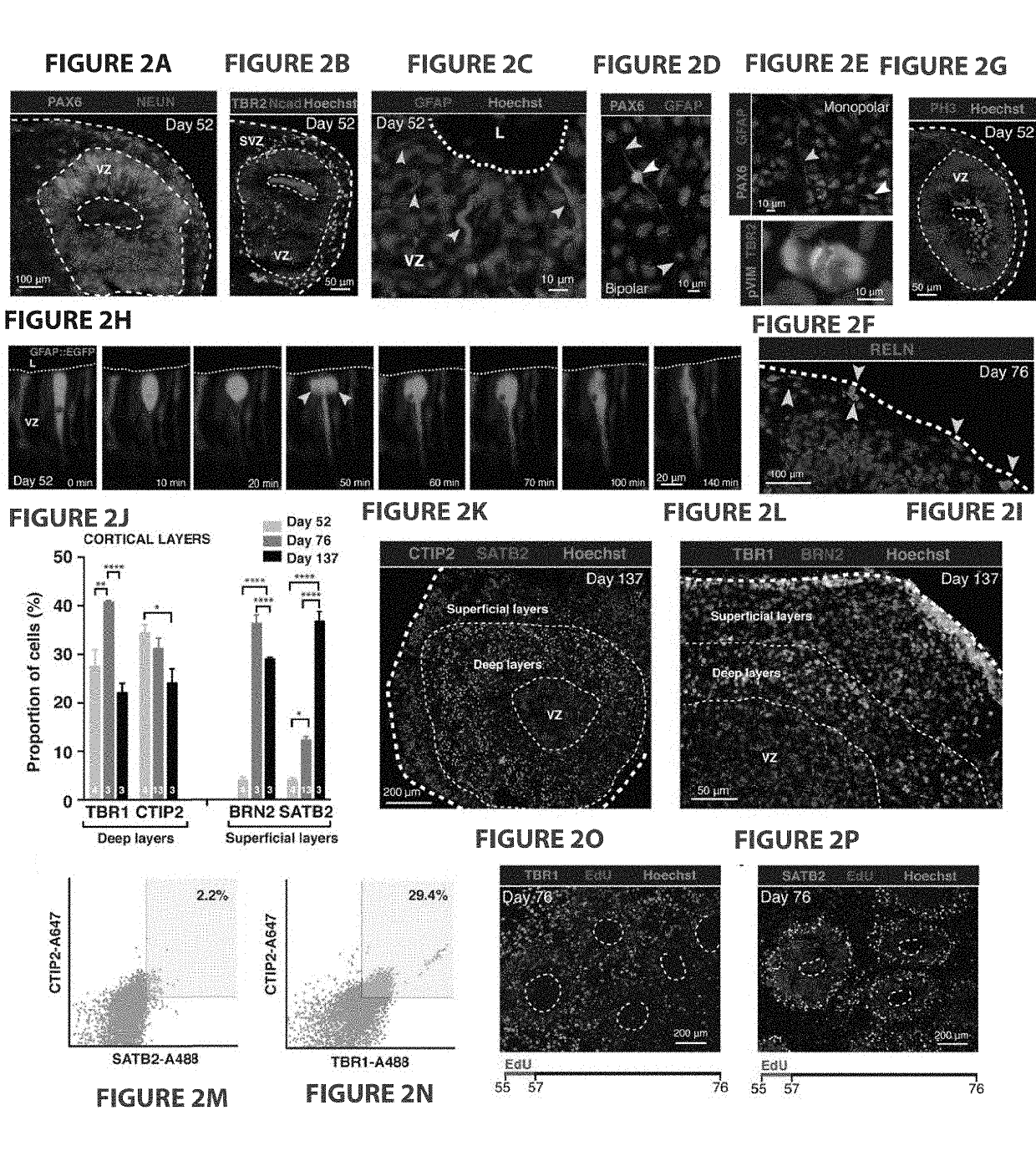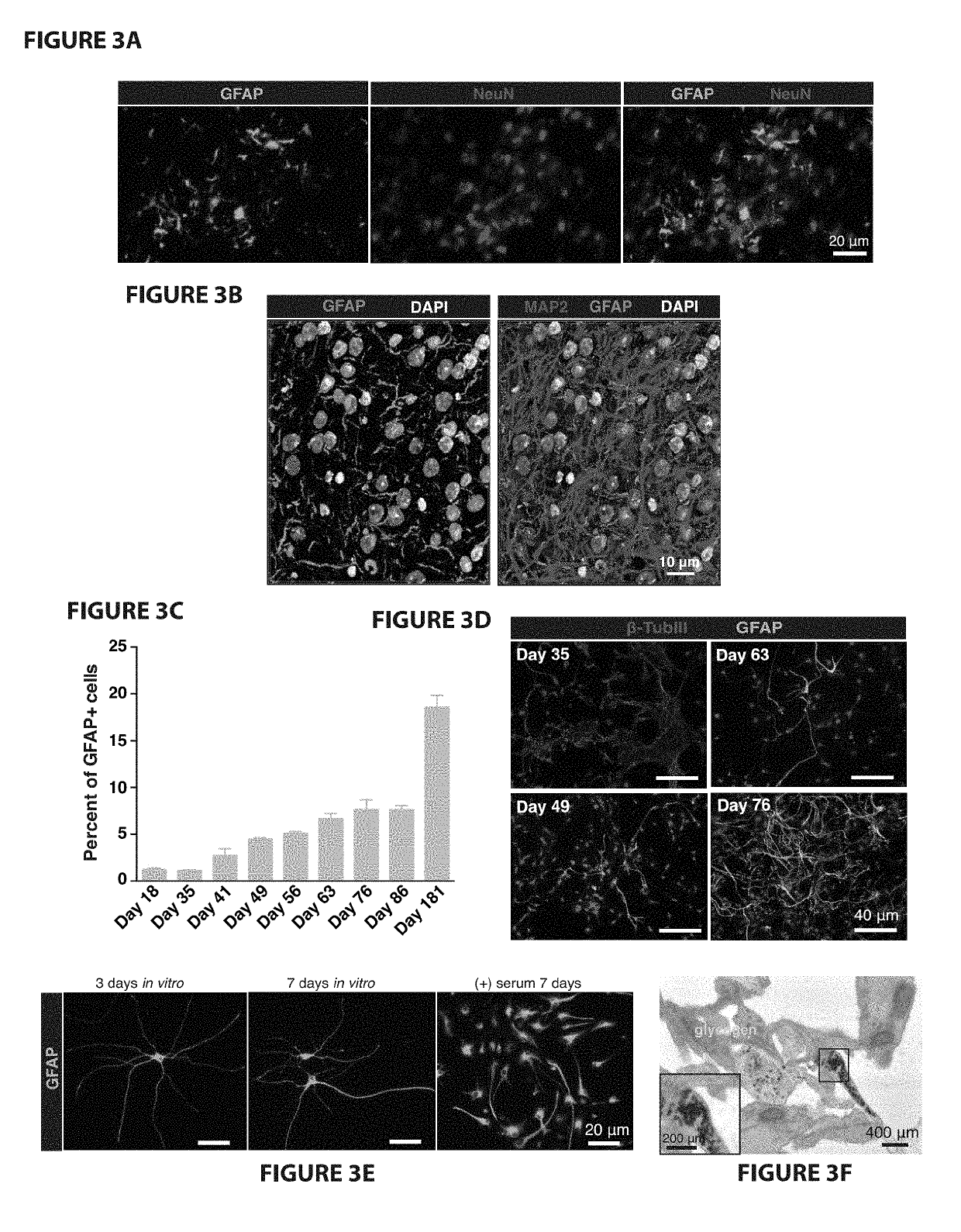Functional astrocytes and cortical neurons from induced pluripotent stem cells and methods of use thereof
a technology of which is applied in the field of functional astrocytes and cortical neurons from induced pluripotent stem cells and methods, can solve the problems of inability to recapitulate the cytoarchitecture of the developing three-dimensional (3d) nervous system or the complexity and functionality of in vivo neural networks and circuits, and achieve the effect of promoting differentiation
- Summary
- Abstract
- Description
- Claims
- Application Information
AI Technical Summary
Benefits of technology
Problems solved by technology
Method used
Image
Examples
example 1
Generation of Functional Cortical Neurons and Astrocytes from Human Pluripotent Stem Cells in 3D Cultures
[0103]The human cerebral cortex develops via an elaborate succession of cellular events, including neurogenesis and gliogenesis, which when disrupted can lead to neuropsychiatric disease. The ability to reprogram human somatic cells into pluripotent stem cells and differentiate these cells in vitro provides a unique opportunity to study normal and abnormal corticogenesis. Here, we present a simple and reproducible 3D culture approach for generating a laminated cerebral cortex-like structure, named human cortical spheroid (hCS), from human pluripotent cells. These hCS contain both deep and superficial layer cortical neurons and map transcriptionally to in vivo fetal development. The majority of neurons are electrophysiologically mature, display spontaneous activity, are surrounded by non-reactive astrocytes, and form functional synapses. Importantly, physiology experiments in acut...
example 2
[0170]The methods as described in Example 1 have been adapted to generate hCS in fully defined, feeder-free and xeno-free cultures. A xeno-free culture contains no animal-derived component but may potentially contain human-derived components.
[0171]Pluripotent stem cells (hiPSC or hESC) are maintained with Essential 8 medium (Invitrogen) on human recombinant Vitronectin (Invitrogen)-treated vessels, and are passaged with 0.5 M EDTA. To improve differentiation across multiple hiPSC lines / clones, cells are treated 24 hours before starting the differentiation with 1% dimethyl sulfoxide (DMSO) (day −1) (Chetty et al, 2013 Nature Methods, 10(6), 553-6).
[0172]The single cell suspension of hiPSC or hESC is aggregated by centrifugation in microwells, and maintained in Essential 8 media with the ROCK inhibitor Y-27632 (Tocris) for 24 hours (day 0). Next day (day 1), spheroids are transferred to low attachment plates in Essential 6 medium (Invitrogen) with Dorsomorphin (Sigma, 5 pM), SB-431542...
PUM
| Property | Measurement | Unit |
|---|---|---|
| Developmental time course | aaaaa | aaaaa |
| concentration | aaaaa | aaaaa |
| concentration | aaaaa | aaaaa |
Abstract
Description
Claims
Application Information
 Login to View More
Login to View More - R&D
- Intellectual Property
- Life Sciences
- Materials
- Tech Scout
- Unparalleled Data Quality
- Higher Quality Content
- 60% Fewer Hallucinations
Browse by: Latest US Patents, China's latest patents, Technical Efficacy Thesaurus, Application Domain, Technology Topic, Popular Technical Reports.
© 2025 PatSnap. All rights reserved.Legal|Privacy policy|Modern Slavery Act Transparency Statement|Sitemap|About US| Contact US: help@patsnap.com



